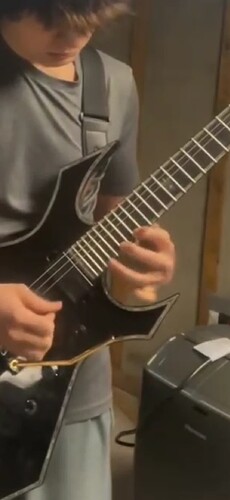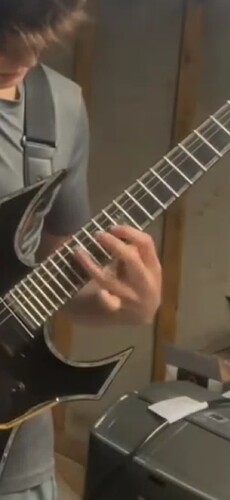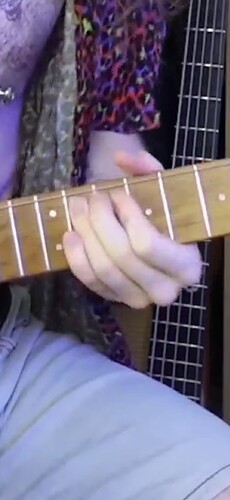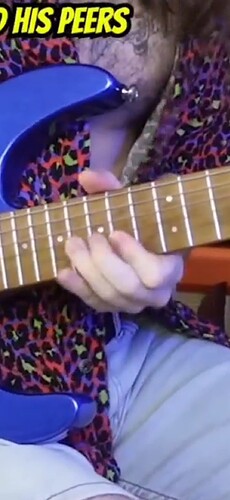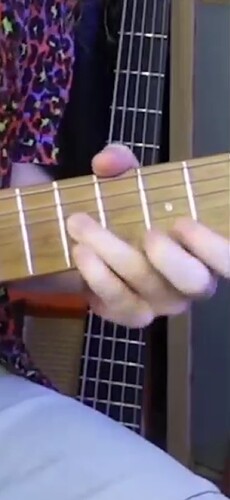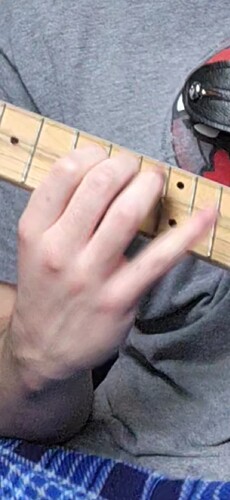Advanced picking technique is often a focus of guitar players, but many players unknowingly suffer from a hidden weakness: the fretting hand. More specifically, the pinky finger acting like a disconnected limb rather than a functioning part of the fretting system. Through observation and analysis, I’ve identified 3 distinct pinky reflex archetypes that exist on a spectrum that relates to varying ratios of pinky extension vs curl. Each have their own mechanical impact.
Type I: Nested Curl Reflex (Player 1)
- Description: The pinky remains curled beneath the hand in a relaxed, coiled position.
- Behavior: Minimal movement when not in use.
- Effect: Maximum readiness, no delay between phrases. This is the gold standard an exists amongst players like Yngwie Malmsteen, Steve Vai, and John Petrucci.
- Ideal For: Fast 3NPS runs, neoclassical phrases, legato-heavy lines.
Type II: Controlled Extension Reflex (Player 2 - Bradley Hall)
- Description: The pinky extends outward slightly but remains under control.
- Behavior: Hovers or floats with moderate distance from fretboard. No extreme movement.
- Effect: Works well for wide-interval licks or expressive playing. Not ideal for high-speed pinky engagement but not harmful.
- Ideal For: Most things if you’re coordinated and have a good picking hand technique that syncs up well enough with the fretting hand, I imagine.
Type III: Full Fling Reflex (Player 3 - Myself a week ago before I started trying to fix this problem)
- Description: The pinky fully extends outward by default, often flaring away from the fretboard.
- Behavior: Returns to extension even after fretting. Must “fling in” to reach notes. Fretting notes with the pinky is like slapping them rather than a controlled curl.
- Effect: Causes disruption in flow, delays transitions, and weakens control. Unsuitable for fast, continuous phrasing.
- Ideal For: Specialized styles with deliberate, rare pinky usage. Think Chris Poland, for example.
Your pinky’s resting reflex matters more than its active use. Curl vs. extension determines whether it’s part of your hand’s tracking system or a disruptive outsider.
Not all extension is bad. Mild extension (Type II) can work with solid technique. But extreme fling (Type III) breaks timing and tone.
You can change your reflex. With deliberate, consistent training (curl-reset practice, low-tension reps), players can shift from Type III to Type I in as little as 4–6 weeks.
I find it baffling how there is little to no discussion on these variations in pinky reflexes and efficiency, whether it’s guitar forums like this one or guitar pedagogy.

